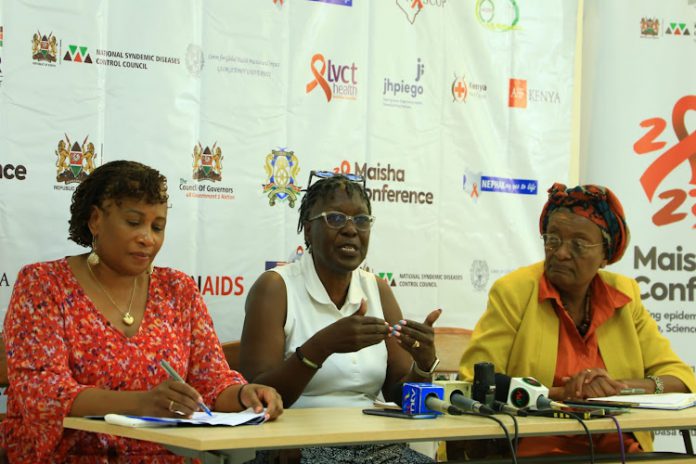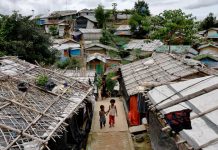Kenya has achieved remarkable progress in curbing new HIV infections and bolstering access to life-saving treatments, National Syndemic Diseases Control Council CEO Ruth Masha has said.
According to Masha, the country has achieved a 68 per cent reduction in Aids-related fatalities, since the initiation of Kenya’s comprehensive Antiretroviral drugs programme.
“Kenya has also seen a substantial decline in new HIV cases, further complemented by the expansion of access to ART medicine. Approximately 1.2 million individuals have been accessing treatment since 2013,” she said.
As part of the government’s vision to eradicate Aids by 2030, Kenya is committed to offering comprehensive treatment, allowing all individuals living with HIV to lead full, quality lives akin to managing chronic illnesses, she said.
Masha was speaking in Mombasa on Sunday during a press conference ahead of the seventh Maisha Conference that is scheduled to start Tuesday.
She said Kenya’s pivotal role in the realm of scientific advancements cannot be understated.
Masha affirmed that the nation’s experts have consistently contributed to HIV research at both national and international levels.
“As a country, some of the milestones we have had is because we have remained at the centre of scientific advancement. There is no HIV research that has been done without experts from Kenya contributing, both at the national and international levels,” she said.
Despite its triumphs, Kenya still grapples with HIV infection challenges, particularly among adolescents.
While strides have been made in eliminating mother-to-child transmission, hurdles persist that need to be addressed, said Masha.
In 2022 alone, nearly 4,400 children were born with HIV from their mothers.
“This is really a big challenge in the county, and it is happening when we have expertise and medication to assist. There is a challenge because of mothers who do not want to cooperate,” she said.
She said there is a need for stronger cooperation between healthcare providers, communities, and mothers to counteract stigma and discrimination that hinders access to vital medication.
HIV is increasingly emerging as an epidemic affecting young adults and adolescents, particularly those aged 10 to 35, according to Masha.
Adolescents face unique vulnerabilities, especially related to pregnancies, which can lead to challenges in accessing necessities like sanitary towels, diapers, and baby food.
Even those initially uninfected by HIV become susceptible due to engaging in transactional sex as a response to their heightened circumstances.
Masha stressed the urgency of supporting adolescent mothers who lack the decision-making maturity to navigate these complex situations.
Dorothy Onyango, CEO of Women Fighting Aids of Kenya, said there is an emerging threat of non-communicable diseases for HIV patients.
Onyango, who has lived with HIV for 33 years, said collaborative efforts with partners and national stakeholders are crucial to secure research funding for a study on the effects of long-term use of ARVs.
She underscored the need to study the effects of long-term HIV and diabetes medication usage, particularly in an ageing population prone to non-communicable diseases.
“The study needs to look at what happens to our bodies for taking drugs for a long time. How to treat non-communicable diseases, which are common among the older people and HIV patients,” she said.
Ruth Nduati, a paediatrician and medical researcher, said in the late 80s and 90s, the HIV prevalence rate was very high.
Nairobi’s HIV prevalence rate was at 14 per cent and Nyanza had 35 per cent, which meant that one in every three persons in Nyanza was living with HIV.
However, the government interventions proved transformative, she said.
She said the introduction of Nevirapine significantly reduced mother-to-child transmission rates.
Over time, access to antiretroviral therapy (ART) expanded, dispelling initial misconceptions about the complexity of administering these treatments.
Currently, Kenya has 1.3 million people living with HIV, Tanzania has 1.9 million people, Uganda has 1.4 million, Malawi has 1.3 and South Africa has 7.6 million people.
“Our generation and our children must be reminded that we should be careful not to drop our guard because HIV/Aids continue to be a great threat even in the midst of the successes recorded,” she said.











